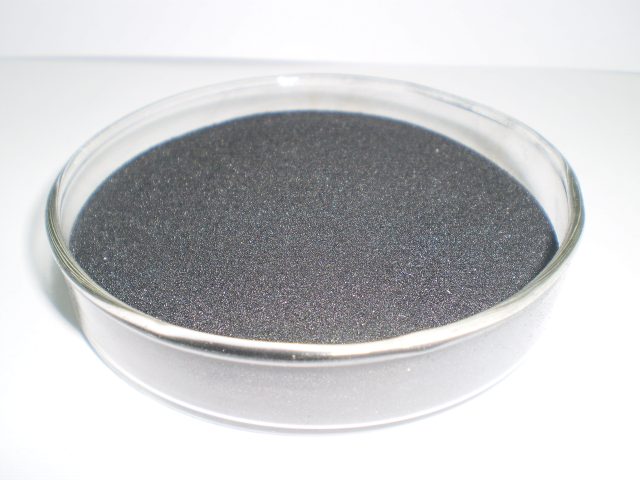Potassium humate enhances crop stress resistance,Plant stress resistance index (one): the content of ABA (abscisic acid: a plant hormone that inhibits growth) in plants. The ABA content of plants will increase under any adverse conditions. Abscisic acid is the “first messenger” that initiates the expression of stress-resistant genes in plants, and effectively activates the anti-reverse immune system in plants.
The standard oxidation-reduction potential (E0) of potassium humate is about 0.7 V, which is equivalent to the electrode potential of the semiquinone radical. Therefore, it is considered that the redox property of potassium humate is caused by the mutual conversion of -semiquinone-phenol. In fact, the carbonyl, alcoholic hydroxyl, amino, nitro, and even fatty carbon structural sites in potassium humate may participate in the redox reaction.
This property of potassium humate not only regulates the redox concentration ratio of soil minerals (αOx/αRrd), stimulates microbial activity, regulates the physiological activity of plants, but also changes in geochemistry, heavy metals and organic poisons (oil, polycyclic The migration and toxicity of aromatic hydrocarbons, phenols, dyes, pesticides, etc. also have an effect.
Experiments show that the presence of potassium humate can keep the effective oxidation-reduction potential (Eh) of the soil environment in the optimal range (0.2~0.7V), which is conducive to crop growth and development.
Potassium humate can activate synthetases (aldolase, invertase, etc.) in plants, regulate oxidase activity, and protect auxin, which is the basic reason for improving plant stress resistance.
- Drought resistance mechanism
Studies have shown that potassium humate plays an important role in improving the cell membrane permeability and protecting cell membranes. - (1) Potassium humate increases the abscisic acid content in plants, and abscisic acid as a growth inhibitor can reduce the stomatal opening, reduce water transpiration, promote the accumulation of osmotic substances such as proline, and keep plants more water. At the same time, it promotes root development, enhances its vitality, and enables crops to absorb more water and nutrients under drought conditions; both have open source and throttling complement each other.
- (2) Improve the activity of SOD (superoxide dismutase) and CAT (catalase) to scavenge free radicals, reduce the damage of membrane lipids, delay the senescence of plants, and make the life activities of crops less affected by drought. It can be carried out more normally.
2.Cold resistance mechanism
Potassium humate can increase the content of abscisic acid in plants, and abscisic acid can increase the content of proline. Proline, as an important osmotic regulator, can stabilize the structure of biological macromolecules, so that the freezing point can be frozen and protect the plants. Cold resistance.
3.Disease resistance mechanism
The mechanism of antibacterial and anti-disease of potassium humate:
Potassium humate contains a variety of benzene carboxylic acids, which can produce limited immunity to certain diseases of plants: Zhang Dehe and others have been from the sulfurized coal humate potassium in Turpan, Xinjiang. 17 low molecular weight polyphenylene acids and phenolic acids were isolated and identified, and these compounds are likely to be disease-inducing agents with different induction effects.
(1) Potassium humate directly increases the soil organic matter content, provides an excellent environment for beneficial microorganisms, and the beneficial population gradually develops a dominant population, inhibits the growth of harmful bacteria, and the plant itself grows robust due to excellent soil conditions. The ability to strengthen the disease, thus greatly reducing the disease, especially the occurrence of soil-borne diseases.
(2) Potassium humate makes the number of aerobic bacteria, actinomycetes and fiber-decomposing bacteria in the soil increase more, the number of fungi is significantly reduced, the ratio of bacteria to fungi is obviously increased, and many fungi can be prevented disease.
(3) Potassium humate contains a phenolic type such as a carboxyl group or a phenolic hydroxyl group and a benzene carboxylic acid structure, which is the same as the active components of some phenoxycarboxylic acids and phenolic pesticides, and has a certain antibacterial and antiviral action.


